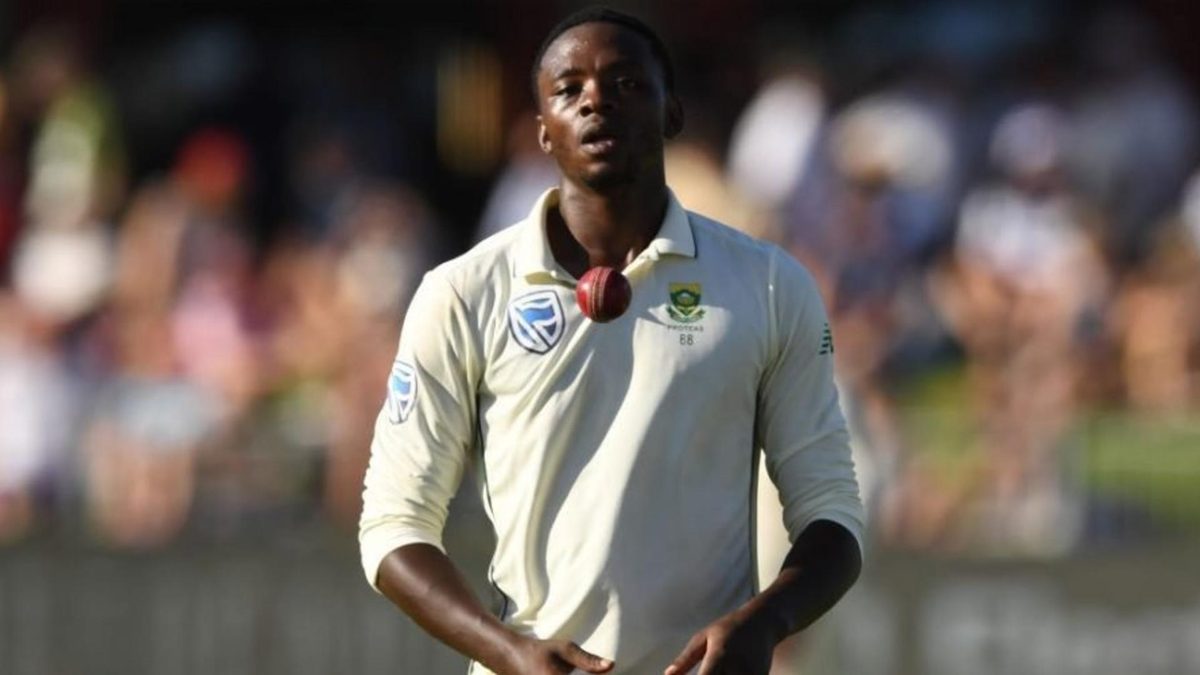
Kagiso Rabada’s phenomenal growth and journey to 200 Test wickets could inspire untapped potential from the larger chunk of South Africa’s population, writes Rohit Sankar.
A flexed bicep emotion. When asked to describe Kagiso Rabada in one word a few months back, Anrich Nortje had nothing more to say. Muscular, sure, but more than the sinewiness, the emoticon stands for what Rabada is to South Africa’s team. In a team that has more often than not had the luxury of world-class bowlers operating in tandem, Rabada was left in the lurch with senior fast bowlers missing several games with injury. At 22, he first led the Test bowling attack, expectations bursting at the seams.
In early 2016, South Africa, still seething from their 2015 World Cup exit, and in complete disarray with their superstar pondering his future, set out to welcome a strong England side at home. Dale Steyn was out with an injury and Rabada, who had made a Test debut just months ago, put his hand up to lead the bowling attack. He took 13-144 at Centurion, shone through a disastrous season for the Proteas and walked away with six prizes at the CSA annual season. At 22 years and 231 days, Rabada was at the top of ICC’s Test bowling rankings, the youngest to occupy the coveted position.
Fire. It’s a word Geoffrey Toyana, his first franchise head coach uses thrice in an interview to describe Rabada. Toyana knows more about Rabada than most. After his 6-25 in the 2014 under-19 World Cup semi-final against Australia, and the subsequent title win that helped South Africa break the knockout hoodoo, Rabada returned home a star, a franchise contract waiting for him. It’s the kind of stardom and fame that can get you carried away.
Rabada was stitched from a different cloth, and so was Toyana. Recognising the fire that spurred Rabada on, and the limited time he had at his hand to groom Rabada before the national team inevitably fast-tracked him, Toyana put his favourite seamer into the leadership group of the bowling attack. When the national team was away at the 2015 World Cup – Rabada had already made his T20I debut by then – Rabada finished the first-class season with 39 wickets at 21.12, including a haul of 14-105, the best ever at franchise level in South Africa.
Leaping panther. Prasanna Raman, the performance analyst in the South African side for a decade, has perhaps observed Rabada more closely than anyone else through videos and describes him as a graceful jungle cat. Rabada arguably has the smoothest action in world cricket at the moment; smooth, lithe and complete with a high-arm finish. But, he’s so much more than just the unblemished bowling action that purists drool over.
Fast bowlers are a self-acclaimed fierce bunch, and their crusade since forever to be portrayed as the gangsters in a show run by batsmen is admirable. The fast bowling Illuminati has kept adding members over the years, each one sworn in to maintain the impeccable image built in time. The best of them are all cricket cognoscenti, and it explains why Rabada needs little assistance. He thrives on instinct more than analysis. It’s perhaps why he has racked up quite a few demerit points from the ICC, but it’s also why he is so good.
Kagiso Rabada takes a wicket after every 40.4 balls in Test cricket. The only bowler with a better strike-rate this century is Shoaib Akhtar. #PakvRSA pic.twitter.com/ildaGoI9gX
— Mazher Arshad (@MazherArshad) January 27, 2021
“Better than me”. Dale Steyn says of Kagiso Rabada. It’s a difficult admission for someone as competitive as Steyn, who prides on his status as one of the world’s best.
The best understand their own game pretty well, and Rabada is no different. His career stats have leapt unbelievably since he came onto the scene. As he completes 200 Test wickets, Rabada has a bowling strike-rate of 40.7, the best ever in Test cricket’s history for bowlers with 200 or more wickets. At less than 26, only five fast bowlers have taken more Test wickets than Rabada. Among them, only Dale Steyn has a better rate of picking wickets than Rabada.
Poster boy. Graeme Smith‘s choice of words to describe Rabada after he earned a demerit point that saw him sit out a crucial Test against England is interesting. “He is on every ad, playing every game, he is carrying the can. If he doesn’t perform well, we are in trouble,” Smith says.
Rabada is Black. It’s a conversation that cannot be skipped if you are discussing South African cricket. Rabada is the face of South Africa’s grandiose transformation policy that has swallowed the pipeline of talent available. He is the excuse the administrators brazenly flash to justify the aggressive agenda to induct coloured and black players in national teams.
It’s unlikely that Rabada’s career would be anything other than a quest to stamp he is the rule and not the exception. On the flip side, it’s a challenge that could condition the next generation of South African players from the largely untapped potential that contributes to more than 80 per cent of the population. His remarkably inspiring journey to 200 Test wickets belies his age, his background, his own unquestionable talent and above all, South Africa’s own cricketing culture.
It’s hard to believe Kagiso Rabada is just 25.








